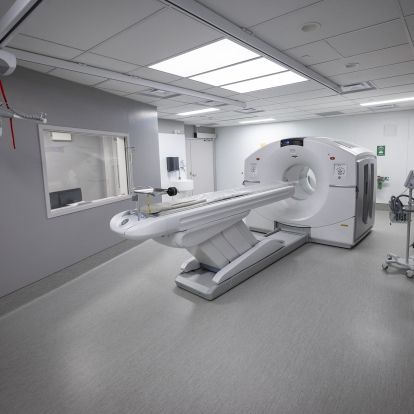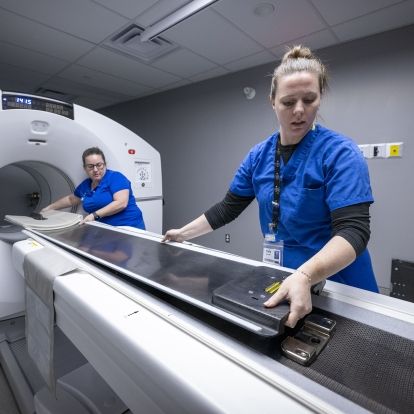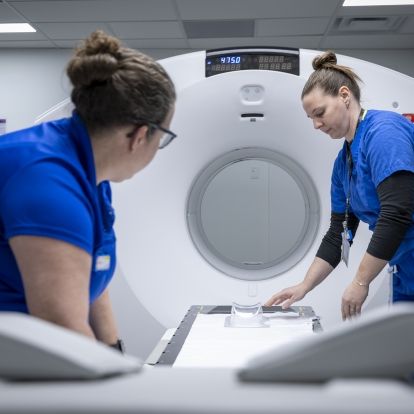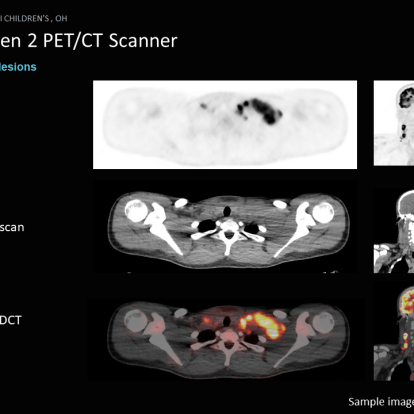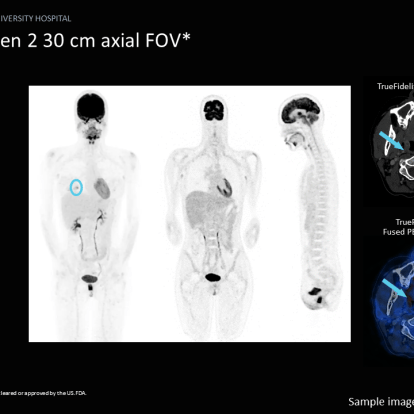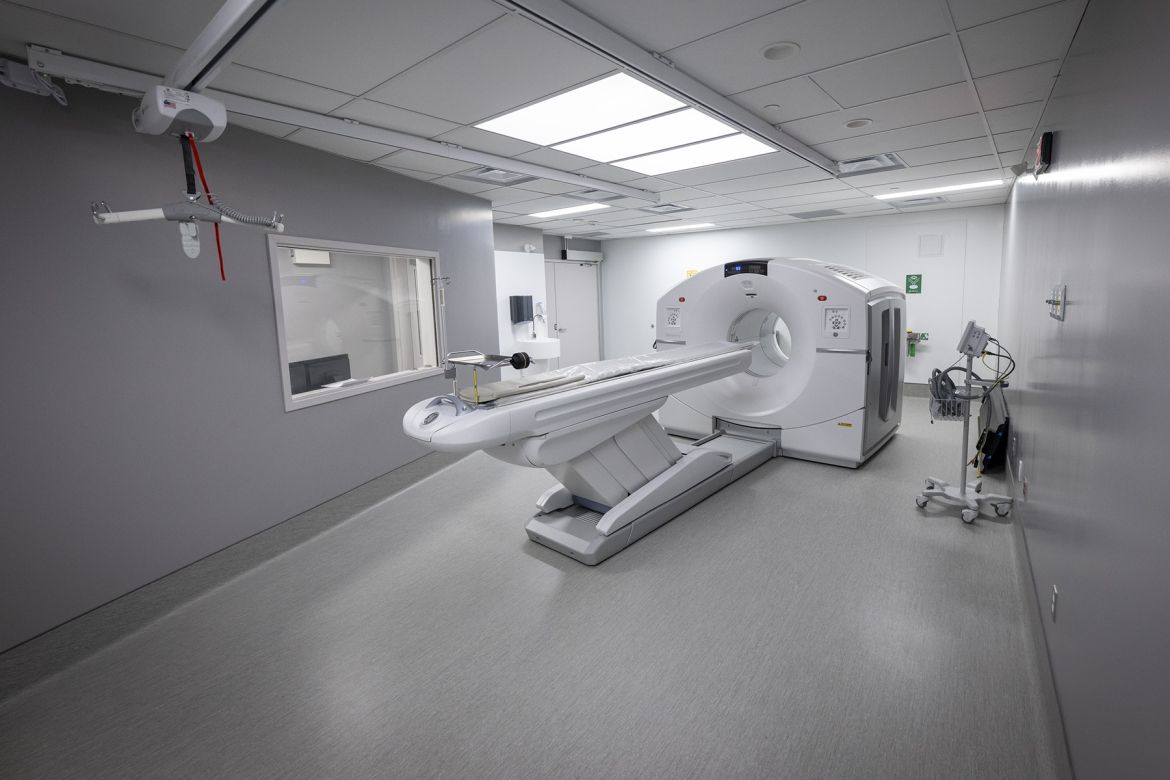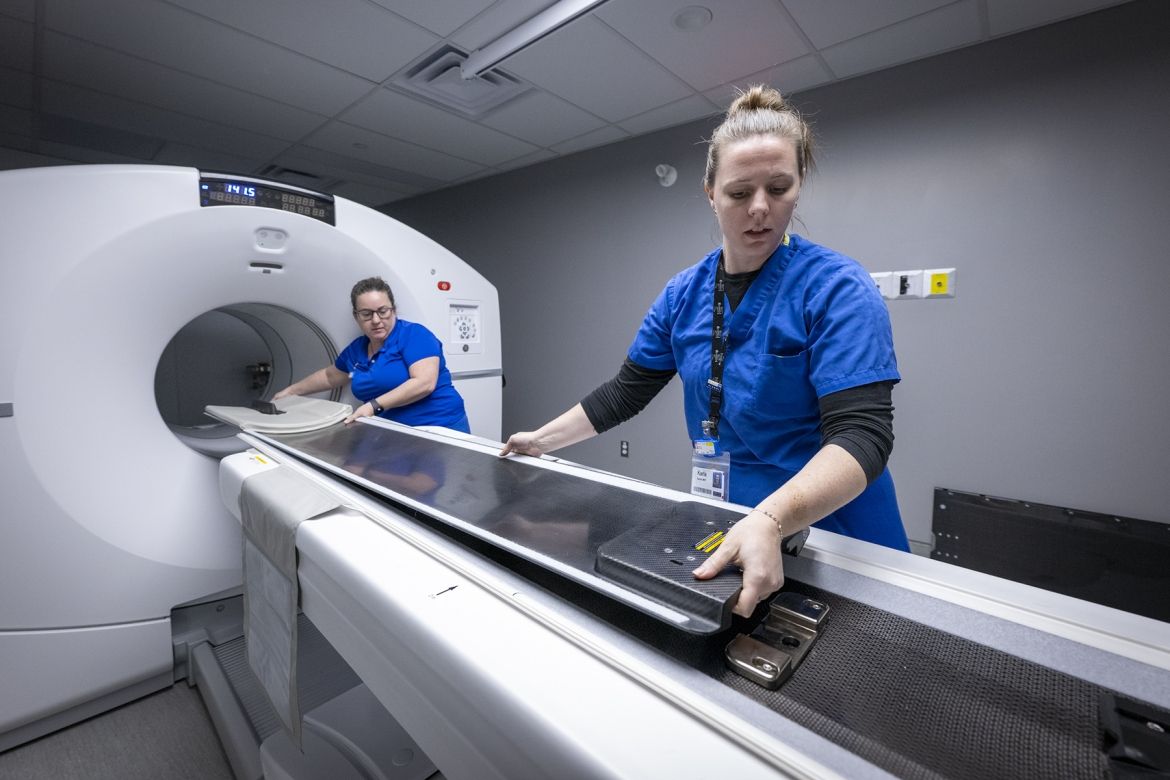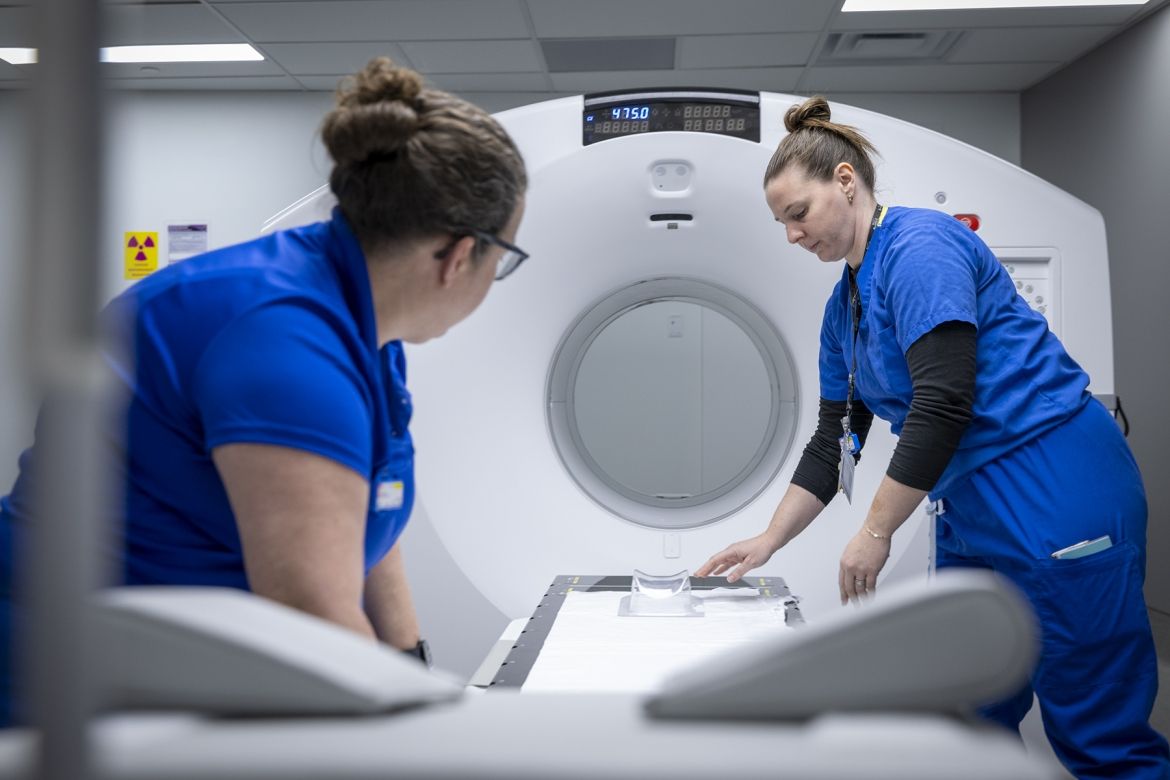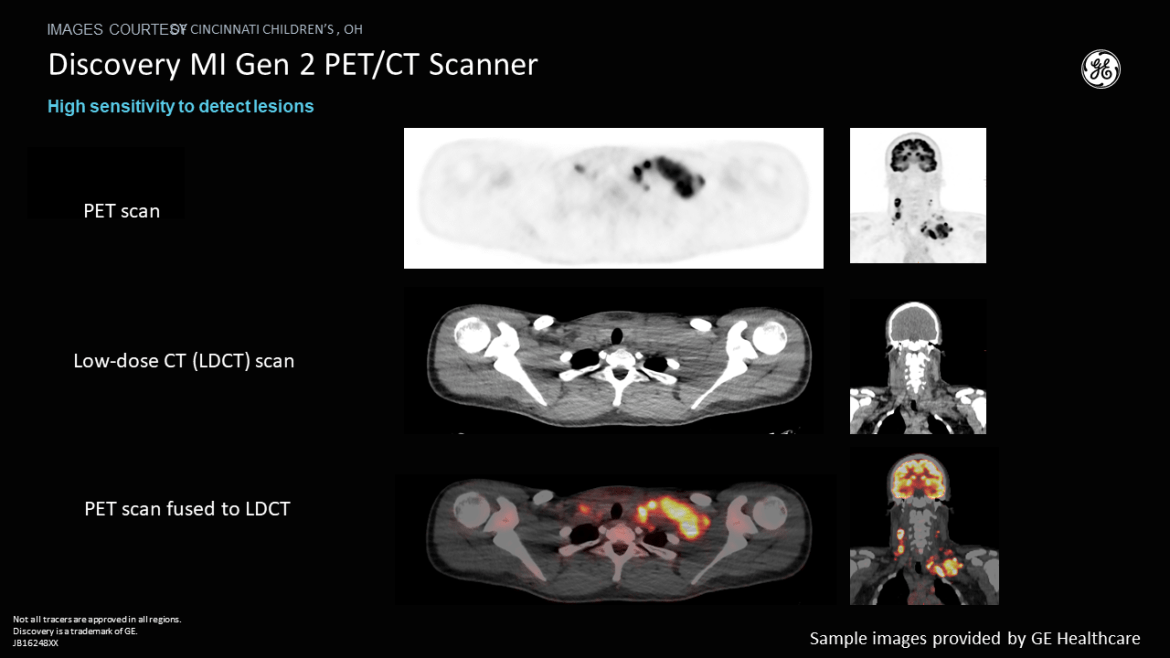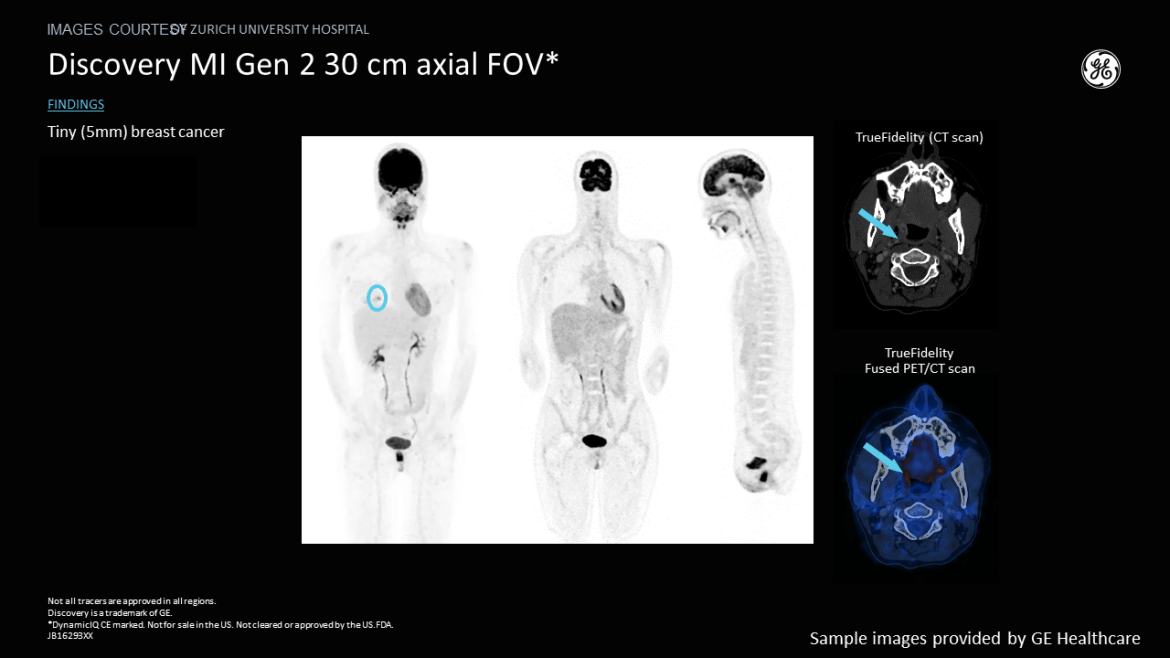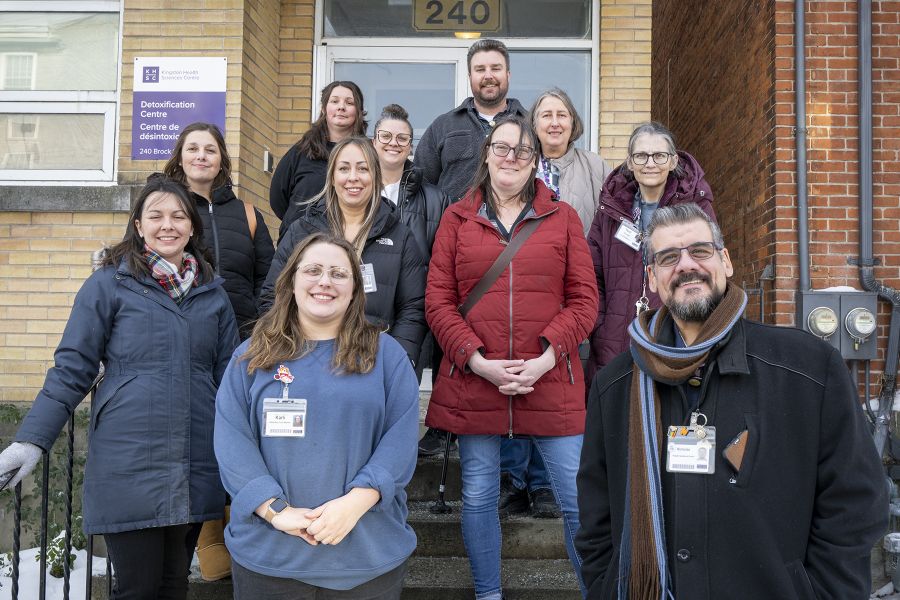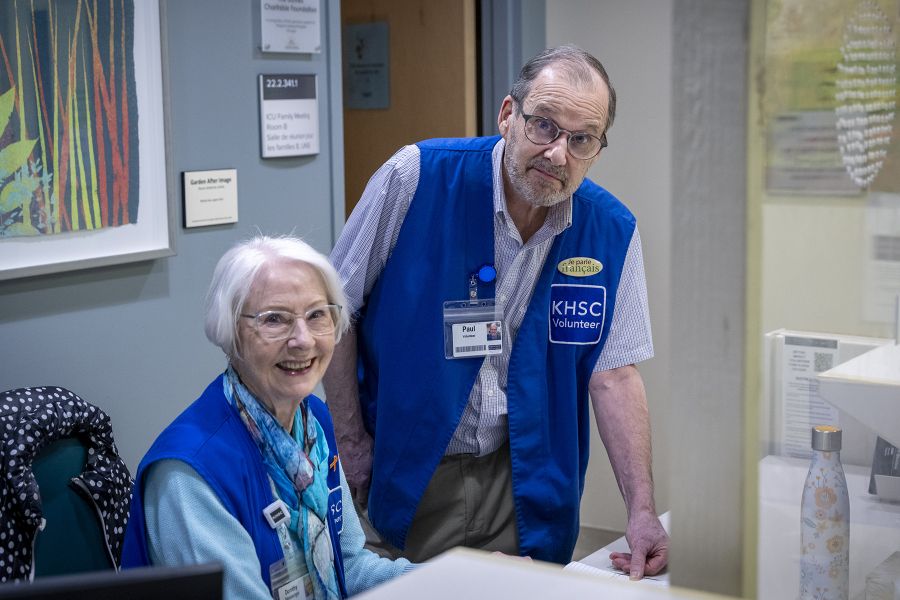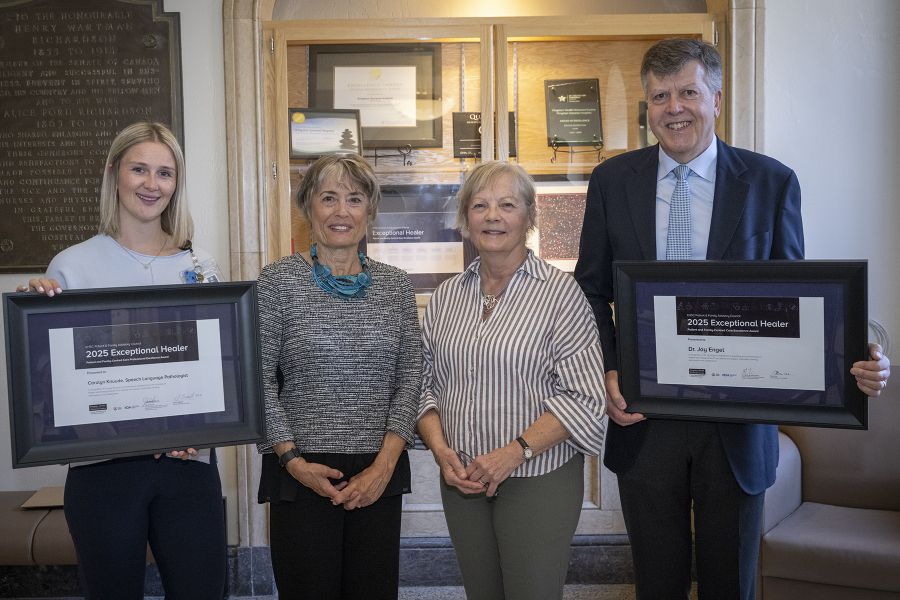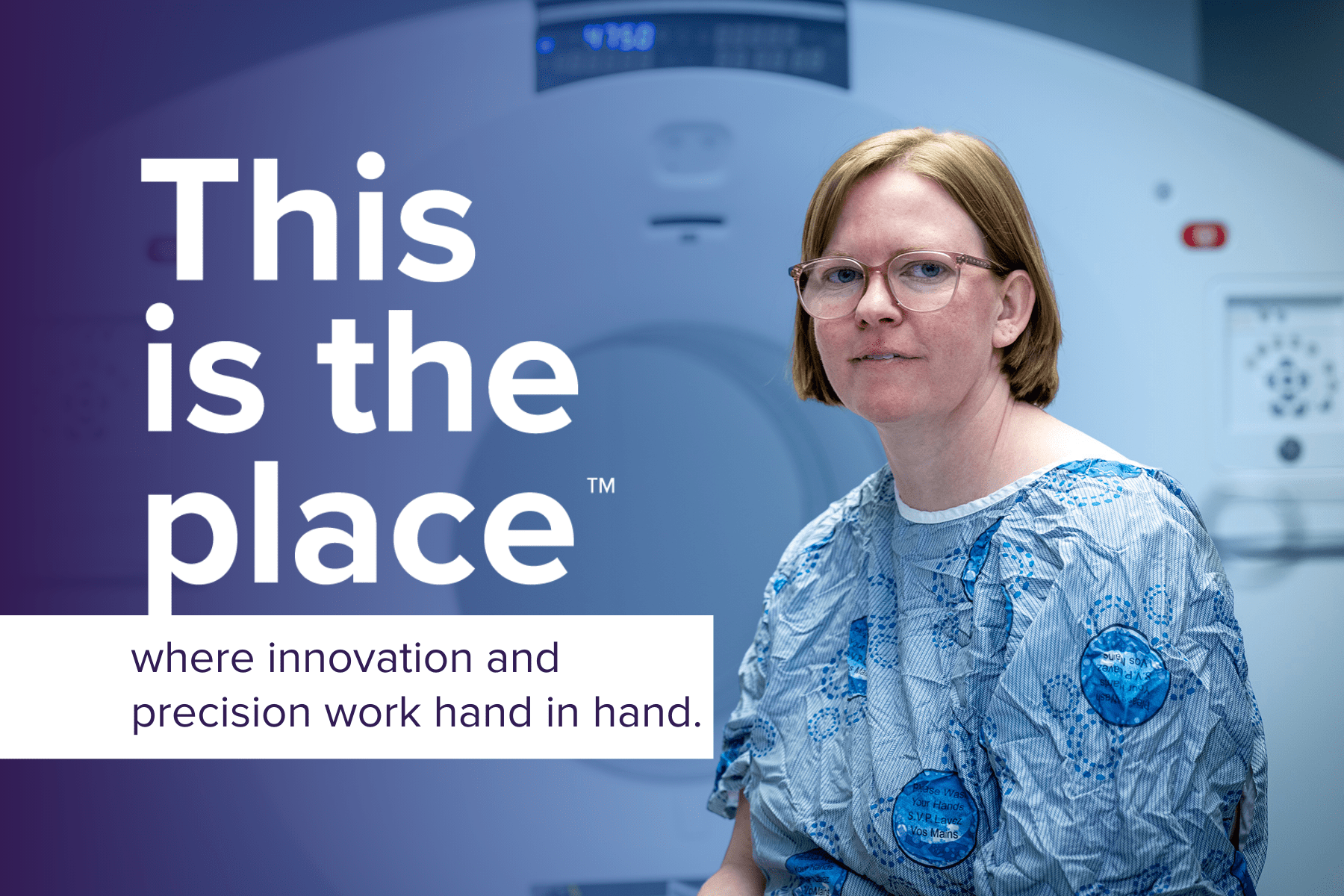
Patients in southeastern Ontario now have access to one of the most advanced diagnostic imaging tools available, following the launch of Kingston Health Sciences Centre’s (KHSC) new PET-CT program. The first of its kind in the region, this state-of-the-art scanner means that fewer patients will have to travel to Ottawa or Toronto for crucial imaging that can detect diseases earlier and improve treatment outcomes.
The scanner combines two different imaging techniques—Positron Emission Tomography (PET) and Computed Tomography (CT)—and provides medical teams with an unmatched view of how diseases develop and progress, at a cellular level.
“PET-CT is effective because it combines functional and anatomical imaging,” says Dr. Roshini Kulanthaivelu, a radiologist with KHSC specializing in PET. "You're not just taking an anatomical snapshot. You're mapping out certain physiological processes.”

Most PET scans use a small amount of radioactive tracer material called fluorodeoxyglucose F-18 (18F-FDG), a radioactive form of sugar that's absorbed by the body and detected by the scanner to track metabolic activity. Most cancer cells use sugar at a higher rate than normal cells, so the 18F-FDG will appear brighter in those areas. When combined with images from a CT scan, the scanner provides a clearer and more precise diagnosis.
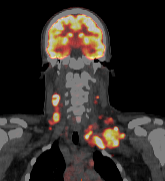
This gives care teams an edge in detecting diseases at their earliest stages, planning treatments with greater accuracy, and monitoring how well treatments are working.
In fact, PET scans can often identify cancers before they appear on other types of imaging. This gives care teams an opportunity to act faster and with more precision—something that’s crucial in cancer care, where the window for effective treatment can be small.
It’s an exciting field that is constantly expanding. We're still at the beginning and it's an opportunity to build a quality PET service for the community. - Dr. Kulanthaivelu
Bringing care closer to home
Having a PET-CT scanner in southeastern Ontario is a step forward for patient care.
"It's about local access,” says Dr. Kulanthaivelu. “There's a population here to justify it, and it's been a long time coming. Historically, people had to travel over an hour, but when you’re sick that’s difficult.”
Christine Hollings, one of the first patients to undergo a PET-CT scan at KHSC, knows firsthand what this means. Diagnosed with melanoma in 2017, she previously had to travel to Ottawa for two PET-CT scans.
Usually when I had to go to Ottawa, I’d have to go up the day before and stay overnight. Seeing that Kingston has one now, it will cut back on travel time and I can go home right after. It’s going to benefit patients. - Christine Hollings
Her recent scan at KHSC was done as part of a follow-up to her most recent round of immunotherapy.
"My doctor wanted to make sure there wasn’t anything else and, seeing as there was now a new scanner in Kingston, wanted me to be involved.”
The new PET-CT scanner cuts Christine’s travel time in half, but it’s not just about time on the road. When patients are referred out of region, it means navigating a new hospital and working with a new care team. Staying within the region means consistent care.
"It’s perfect being closer. I don’t have to travel as much, and I know the hospital,” says Hollings.
This is the place where donations change lives.
Your donations make innovative care possible.

